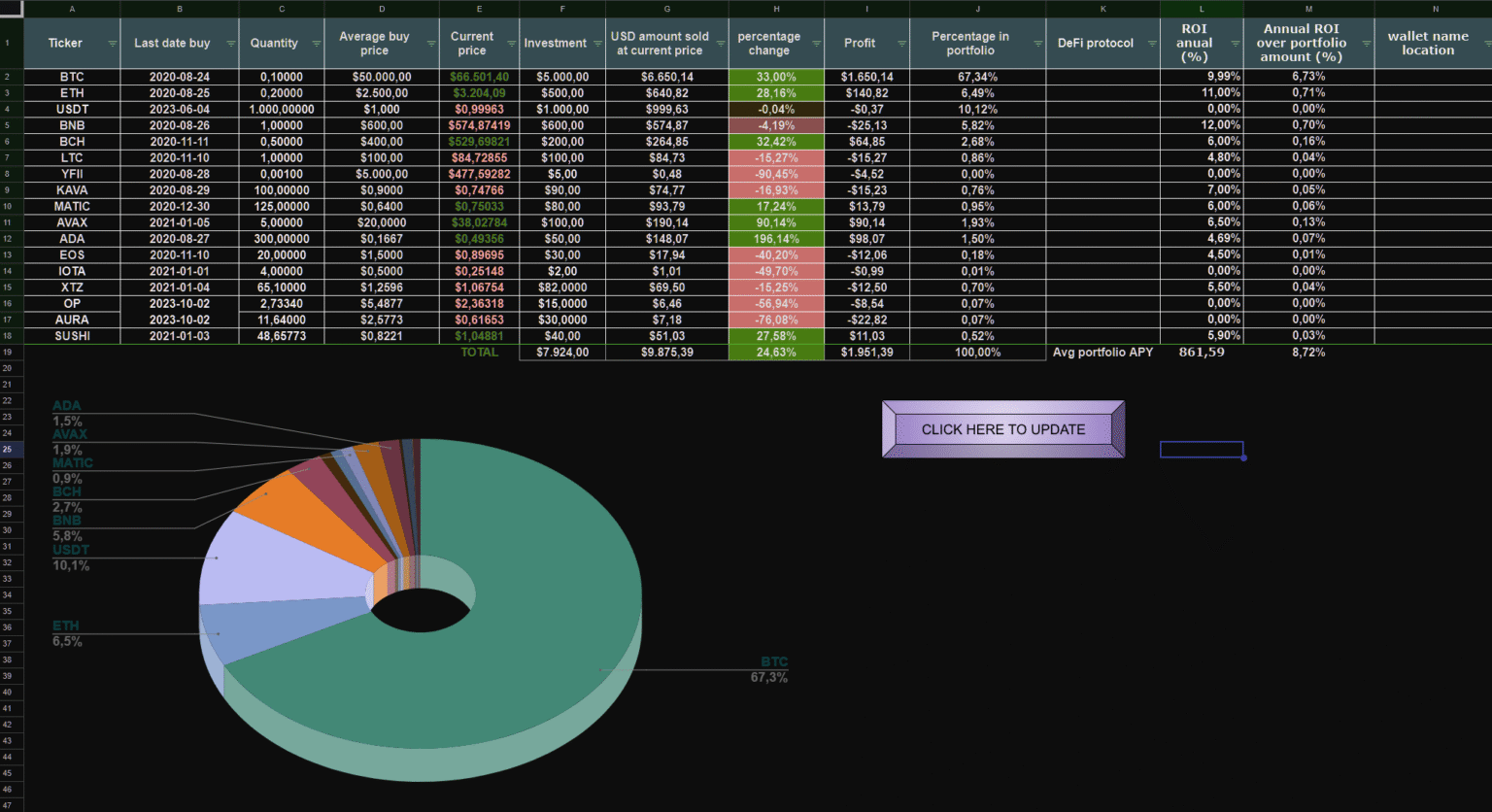Entering the crypto market can feel like stepping into a casino: flashing lights, endless tokens, and a hundred voices telling you what to buy. But there’s a smarter way to approach your first crypto allocation—one that emphasizes clarity, purpose, and risk control.
This guide walks you through how to structure your first crypto portfolio from scratch—no hype, just strategy.
1. Start With a Clear Budget (And Stick to It)
Before you touch your first token, decide:
- How much money are you willing to invest?
- How much are you okay with losing?
A realistic starter allocation might be:
$1,000 or less — enough to learn, not enough to ruin your finances.
Pro tip: Consider this amount as “tuition” for learning. You’re buying experience as much as assets.
2. Break It Down: The 3 Crypto Allocation Tiers
A smart beginner portfolio can be split into three parts:
Core Layer (50–60%)
Hold the most established assets with long-term use cases.
Examples: Bitcoin (BTC), Ethereum (ETH)
These are your “digital gold” and “internet infrastructure” plays.
Growth Layer (25–35%)
These are mid-cap altcoins with high potential but more volatility.
Examples: Solana, Avalanche, Chainlink
Aim for 2–3 assets you’ve researched—not 15 tokens you saw on X.
Experimental Layer (5–15%)
This is where you explore DeFi tokens, new Layer 1s, or presales.
Examples: Friend.tech tokens, zkSync projects, early-stage coins
Assume high risk — but high potential reward.
3. How to Choose Which Assets to Buy
Criteria to consider:
- Do you understand the use case?
- Is the project active and transparent?
- Would you still hold it during a bear market?
Avoid:
- Meme tokens without fundamentals
- Projects with anonymous teams and no roadmap
- FOMO buys based on TikTok, Discord hype, or trending hashtags
4. Avoid These Common Beginner Mistakes
- Buying 20 small-cap coins “just in case one moons”
- Ignoring transaction fees and gas costs
- Leaving everything on an exchange
- Changing strategy every time a new YouTuber posts a video
The goal is consistency, not chasing pumps.
5. Rebalancing: Set It and Actually Forget It
Once you’ve built your allocation, avoid the temptation to tinker daily.
Set a monthly check-in:
- Is your allocation still aligned with your goals?
- Did any project fundamentally change?
Unless your life situation or the market has shifted dramatically, stay the course.
6. Store and Track Like a Pro
Use trusted platforms and tools:
- Buy your initial allocation via Binance for low fees and wide availability
- Move your core holdings to cold storage with Ledger
- Use portfolio trackers like CoinStats or Zerion to monitor allocations across wallets
Security and visibility are critical from day one.
Related Reads from The Coin Vibe
- How to Diversify Your Crypto Portfolio in 2025
- How to Build a Crypto Portfolio That Survives Any Cycle
Takeaway
Your first crypto portfolio isn’t about finding the next 100x—it’s about learning to allocate capital with intention. Think in systems, build with logic, and most importantly: stay in the game long enough to win.



